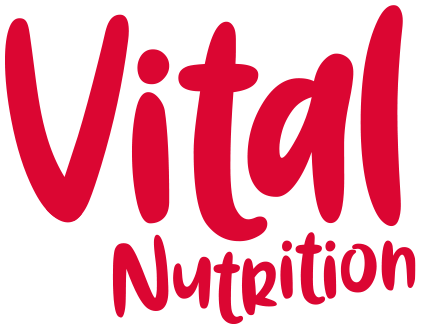Vital Nutrition for Teenagers
With raging hormones, the pressure of school and exam results and the stress of trying to fit in with the cool kids, teenage years can be challenging.
Your teenager’s body is going through a massive change and their body has a high demand for good nutrition, but it is also a time when kids start to become more independent than ever, and are probably influenced more by their friends, other adults and social media than by what a parent has to say. With the teenage growth spurt, comes and increase in appetite, and often this gap is filled with high sugar, highly refined junk food.
It can be tricky to navigate your way around their changing nutritional needs, while not vilifying any food, or restricting their diet in an unhealthy way, but the more we talk to our teenagers about how food can help them to feel better, educate them on what a healthy and balanced diet is, and teach them how to cook, the better.
Increased nutritional demand
There are certain nutrients that teenagers need in higher amounts now that their bodies are going through puberty and charging at such a rapid rate. Bone nutrients including calcium, boron, magnesium, vitamin A are really important between now and their early twenties when they will reach their lifetime peak bone mass. Iron is important for all teenagers, but especially for girls as they start to menstruate. B vitamins for energy and metabolism, protein for growth, essential fats for hormone balance and skin support, zinc for hormones and skin health, and the requirements for iodine increase for about age 11 on too.
Here are some simple ways to help your teen optimise their nutrition:
Teach your teens the essential life skill of cooking. Start with some basics and go from there. Use the type of food they like to eat as inspiration - spicy chicken noodles, fajitas, Spaghetti Bolognese.
Swap to low GI carbs with family meals. Make the switch to low GI carbs for the whole family - brown rice, wholemeal pasta and brown bread for more slow, sustained release energy to fuel their body and brain.
Set them off with a decent breakfast. Have a few options for them at breakfast:
- Eggs on toast
- Wholemeal toast with peanut butter and banana
- Overnight oats with berries and seeds- Yoghurt with fruit and low sugar granola
- Weetabix or shredded wheat
Snack foods… Teenagers are hungry! They have an increased calorie requirement thanks to the growth spurt. Good snack options include:
- yoghurts
- cheese and crackers- nut butter on toast
- lower sugar biscuits
- houmous with crackers or veg sticks
- fruit- fresh or frozen for snacking, smoothies or adding to yoghurtGood fats - Include oily fish in the family's diet twice a week - salmon or trout are good for dinner. Smoked mackerel pate makes a good snack, or smoked salmon with scrambled eggs for a weekend breakfast. If this is a no-go, then an omega 3 fish oil supplement, or a vegan alternative is advised. Teenagers consume very low levels of nuts and seeds in comparison to other foods in an average day, so nut butter, milled seeds and trail mix are good options here.
Red meat. Your teenager needs more iron, zinc and protein, and a very good way to achieve all three is with good quality red meat a few times a week. An iron supplement is recommended for menstruating girls.
Cut the sugars. Teenagers eat 5% over the recommended intake on non-milk sugars (fruit juice, sucrose, glucose etc). Swapping sugary drinks for water, limiting sugary cereals and cutting back on snacks will make a big impact with this. Keep an eye on food labels when you shop and choose the lower sugar options - but take care not to substitute with artificial sweeteners.
Want to know more?
My Teenage Health class is available to download here.
This blog post first appeared as my column in The Irish News on Saturday 3rd September 2022.

